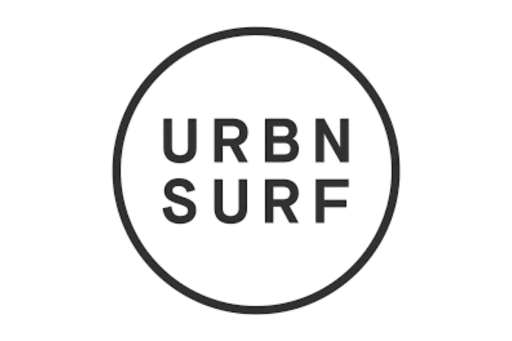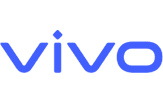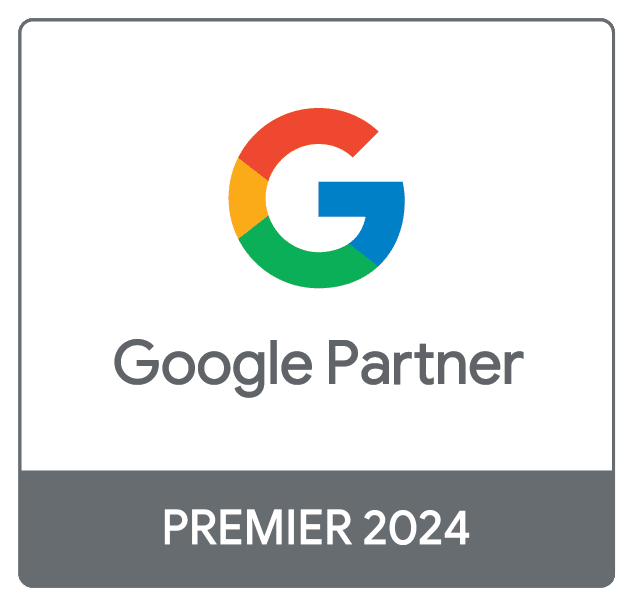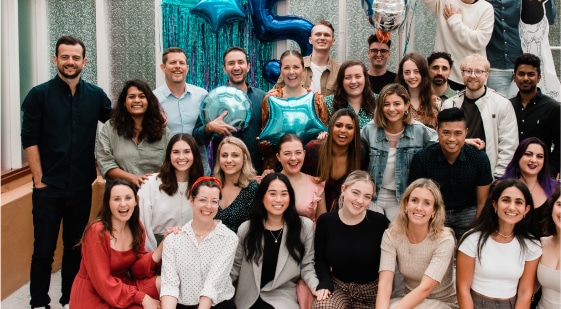Marketing to Gen Z and Gen Alpha
Episode Description:
What happens when a generation that grew up online starts leading your marketing conversations? Host James Lawrence speaks with Katy Richardson, Global Head of Marketing at student living app Housr, about how Gen Z - and soon Gen Alpha - are rewriting the rules of brand engagement.
Key Takeaways:
- How Gen Z is already influencing both consumer and B2B buying decisions, and what that means for marketers
- Why user-generated and employee-generated content is now non-negotiable as part of a social strategy
- How to make the most of influencers by giving them creative license
- Short-form videos vs long videos - what wins on social media?
- How social commerce is changing the way younger audiences discover and buy products
- The role of traditional channels like out-of-home advertising in connecting with digital-first audiences
- Why younger consumers expect brands to take real action on purpose, ethics and sustainability
- How to meet Gen Z’s demand for fast, responsive and real-time communication
Featuring:
About the Guest:
Katy Richardson is the Global Head of Marketing at student living app, Housr. With over 12 years of creative and marketing experience across Australia and the UK, she specialises in connecting brands with young, digitally native audiences. Prior to Housr, Katy led B2C marketing for UniDays and worked agency-side on Gen Z-led campaigns.
You can follow Katy on LinkedIn.
Transcript
James Lawrence: Welcome back to the Smarter Marketer Podcast. I'm here today with Katy Richardson. Katy, welcome back to the pod.
Katy Richardson: Thank you. Good to be here.
James Lawrence: Katy is Global Head of Marketing at Student Living App Housr. Previously she was the B2C marketing director ANZ at student discount platform Unidays, and she has over 12 years of creative experience and marketing experience, both in Australia and the UK, marketing to young audiences.
We were chatting before recording and we did a pod, it's actually over two years ago now, which feels like only yesterday, and it was one of the better received pods we did, so I thought it'd be great to have you back, Katy to talk about marketing to younger audiences.
Katy used to work at Unidays out here and two years to the day she said she's been back.
So how's life back in the UK?
Katy Richardson: Yeah, very fast. Two days. Yeah. No, really enjoying it. There are some challenges and opportunities with working in a global role. , At the moment we work across the UK and the us but I'm really enjoying that challenge.
I've got an awesome team behind me, and again, [00:01:00] working in the student space with Gen Z is my bread and butter, so really enjoying it on that front.
James Lawrence: That's good. So crossing time zone, meaning you get no sleep, but apart from that, yes.
Katy Richardson: Nothing. Well, I'm an early bird, so it is probably easier to talk to Australia because it's of this overlap, whereas the US come online sort of our afternoon.
, But yeah, everyone's super flexible and , it's a great team. So
James Lawrence: it's challenging with the current role, , who are , the target audience in terms of ages , and demographic?
Katy Richardson: Yeah, so , we market completely to students. It's a student housing app. So think of it as like the Airbnb, I guess, of student living.
, In the uk I guess our B2B audience is letting agents as well. We connect them directly with students and in the US it's not only letting agents, but also colleges. So we partner with colleges out there to make sure that there's , a safe housing solution for students.
James Lawrence: Nice. Very good. Good overlap with the, all the time you spend at uni days.
Kind of similar demographic. Um, in terms of , the topic today, understanding the next generation of consumers, gen Z, gen Alpha, , I did some [00:02:00] research before the pod, so millennials seem to fit into that. , The numbers jump around a little bit , but millennials born 1981 to 1996 is I.
Widely regarded as , I'm happy that , I just fit into that by one year. So , I'm taking that , to the bank, , gen Z, which will be the focus, of today's conversation. So, born in the mid to late nineties to around 2010. That's, . People that today are mid-teens through to mid to late twenties,
and then Gen Alpha, , is, a kid born , 20 10, 20 12 onwards. , and it'd be interesting, um, Katie,
does that kind of stack up with, , what you look at and traits , of those, generations?
Katy Richardson: Definitely. Yeah. Obviously Jen Alpha being the emerging generation now, , what we do know about them is they're growing up into a fully digital, , lifestyle, , the way they'll interact with AI and kinda immersive technologies and, , the way they will experience.
Online life. , , they know no different. Yeah. [00:03:00] Gen, you could say the same. , They obviously are completely digital native. , They're , they're actually the most diverse and the largest demographic in history. Um. And as well as being digital native.
They're the first demographic, the first sort of age group you could define as global citizens, I guess. Mm. Um, there's this notion of global community, which has been unlocked by platforms such as TikTok and social discoverability. That means that communities can exist on a global scale rather than just being local.
And I think that's really exciting and , it helps define them , as a group.
James Lawrence: So interesting, isn't it, I guess. Um, , when you say the largest, that's literally just the most, the population wise. The biggest cohort. Exactly.
Katy Richardson: Yeah. Yeah. They currently account for I think about a third of the world's population.
James Lawrence: It's amazing, isn't it? , I mean, rockets reasonably split B2B, B2C, and I think it's easy. Given a lot of budgets, marketing decisions are set by people that aren't in this cohort. Right. But it's starting to change. If you're looking at, [00:04:00] people that are early in that Gen Z, you're now moving into. Roles where you are managing a team and you're making decisions around budget and , , it's a different kettle of fish, maybe even from a couple of years ago when , we last spoke.
But increasingly it's a disposable income in a personal capacity, but making more important decisions in a business one as well.
Katy Richardson: Absolutely. , It is an interesting shift as well, the approach to brands. I think that's, it's a slightly different , but I think the way that these Gen Zs are now decision makers and shaping the way that brands present themselves.
. I think it's been a great shift. Obviously we're seeing more personal brand come through in bigger brands. , The use of social media, obviously to tell stories about brands and people within it, and the rise of EGC, so employee generated content. Mm-hmm. I think that's heavily led by Gen Z because that's their native environment
James Lawrence: because at one level, . We like to debunk stereotypes and we like to, , challenge assumptions , but stereotypes do [00:05:00] exist for a reason, right? And , I was reading up prior and Gen Z, true mobile, first generation side hustle, culture, diversity, inclusive inclusivity, individuality, mentally health aware, preferred TikTok, YouTube, snapchat, , a low tolerance for BS authenticity and.
, Small sample size, but I look at, , my nieces and nephews, I look at younger staff in the office and they are , common traits and common trends, which I think are different too. If we're looking at boomers or if we are looking at, , millennials, I think , they're dialed up and , it's all there for a reason, right?
Katy Richardson: , Yeah. I think these are really important. , Traits that Gen Z brings to the workforce. I think the idea of authenticity and having an authentic brand voice is something that not only Gen Z, but all demographics are really respondent to people. Like seeing the personalities behind these brands and the opportunity to have a bit more fun with it, , demonstrate more humor and behind the scenes, as I say like ECG, employee generated content being on the rise.
, And that will just [00:06:00] continue to increase as. Gen Z fill out the workforce and we'll see Gen Alpha eventually come in as well.
James Lawrence: And it does probably run contrary to our default position, right? I think it's always , what if something goes wrong? We need to stick to the style guide, the brand playbook.
Things have to be more buttoned down, conservative. 'cause . Just one generation prior things were just so one-sided and the brands had all the power and we don't make mistakes. And it is letting up the reins outta that is so challenging, I think, for a lot of our clients, right?
Where it's like, well, if you wanna be on TikTok, you're gonna have to let go of all those safeguards and you're gonna have to engage on their terms, not yours. Right?
Katy Richardson: Absolutely. And to make content feel authentic, you have to actually say you have to let go and you have to relinquish that control to some extent, if you're willing to do so as a brand, I guess some brands just won't go there.
, I can't name many actually , from experience. Like a lot of people are willing to demonstrate that flex , and , give it a go. , My own social media team, I trust 'em implicitly. They all fall within that demographic and I know they know what we're trying to achieve [00:07:00] and what we're trying to say.
And , especially with social media, that's absolutely platform to. To be taking, those risks
James Lawrence: doing something. And how do you work with your team to manage social?
What are those things you're focusing on? Attention span, length of video, different channels you're playing in, , 'cause you do have so much experience. 'cause prior to, for listeners, prior to uni days, you worked in an agency that worked in this space as well. Right. Your whole career has been , in this kind of cohort.
Like , , what are those things that you do see working?
Katy Richardson: Yeah. I think in terms of what we see working, trending, and . Viral content is always gonna be a winner. And again, that's not just for Gen Z. That's, I think anyone in the social space. Being quick to respond to a viral trends, , is really important.
Trending keywords and terms as well, and making sure you're considering that in, in the content you're putting out. , We do a lot of short, , we do a lot of short form video, so just quick. Bite size chunks of information or entertainment that works well for us. Yeah. , That being said, obviously [00:08:00] that's a great format for TikTok, Instagram reels, YouTube shorts.
We don't at the moment play a lot with longer form YouTube content. , But that absolutely is an opportunity and we know that. I think there's a lot of conversation around. , Short form video versus long form video. I think that's absolutely a place for both. , And especially if you're talking to a certain interest group or community.
, Both are equally as important, but personally at the moment, we're adapting to. Short form and, , jumping on trends, things like that and how just to make volume of content we're getting out , is high as well. Because that's another thing, making sure we're constantly present on social
James Lawrence: And that's all being done in-house, right?
Just , to ensure you can get that volume of creative out.
Katy Richardson: Yeah, and we actually, do a lot of it in-house and we have a network of brand ambassadors that are all students across the country, and in the US as well. Loosely brief them. Sometimes we give more explicit briefs, but we use a lot of UGC as well because I think peer to peer content when you're trying to relay a message is really impactful.
So we do that a lot as well.
James Lawrence: Yeah. , We're [00:09:00] increasingly doing a lot as well, particularly when we're playing with TikTok, et cetera, in the agency. , What advice would you have for listeners around UGC and. How to engage when you're working with creators and influencers and setting yourself up for success there.
Katy Richardson: Yeah. I guess advice wise, selecting the creator influencer based on their audience and the content they put out and not having a brief that is too restrictive or would result in them creating content that felt inauthentic. To what they do. Yeah, because , gen Zs and millennials on social's used to seeing ads immersed in the social space, , with the rise of social commerce.
But as long as you are partnering with influencers and creators in a way that leverages what they're already doing, well, they have their community and that's what brands want to tap into. So trust them, as long as the brief is explicit and you set out any guidelines of what you absolutely wouldn't.
Wants to be said , or done , and that's why [00:10:00] research is so important, understanding who you wanna work with and what they stand for , and what the benefits would be. Because , it's so clear when something feels manufactured as a result of, , the brand being too. Of what has to be done.
Yeah. So I think that creative freedom's really important.
James Lawrence: That's great advice. There's a really, great line. , It came from , a fast company survey and I think when I. The, I think it's like a misnomer around Gen Z and it's all around that short attention span.
And like all these numbers, , that they can only focus on something for eight seconds. And I was basically saying, , gen Z allegedly has the attention span of about eight seconds compared to 12 seconds for millennials. This is not true. Gen Z's possess a sophisticated eight second filter derived from growing up with massive amounts of information.
This is a BS filter and it's just so true. , It's not the, yeah. If there isn't the capacity to focus or concentrate, it's that that guardrail is up so high that they smell it, they know . What's authentic and what's inauthentic and they just move on which is the whole TikTok [00:11:00] thing, right?
If you choose to engage, they will smell you coming in with an ad. , If there is someone that they trust, an influencer or content creator, and you try to strong arm them into, , your tone of voice or your style guide or your brand values or whatever it might be, it's just not gonna work, right?
, You have to trust the process if you wanna engage at all.
Katy Richardson: Yeah, absolutely. , I love that line and I completely agree with it. I think the eight second filter is way more fitting. , We know that Gen Z have a much longer attention span for content they wanna absorb, hence streamers and, , YouTubers, vloggers, everything like that, that's so popular because it's entertainment.
, The Gen Z are willing to. Spend time on, but as you say that the first few seconds of a piece of content that is sponsored , or has an ad within it, ,
James Lawrence: has to really hit the mark,
Katy Richardson: really. It, absolutely, yeah.
James Lawrence: , What little practical hack do you have, , in terms of trying to get that attention and that hawk and trying to bring someone in?[00:12:00]
Katy Richardson: That's a great question. So in terms of advice for creating content and making sure that you are getting the message across early on and not getting swiped past, making sure that the content looks native to the platform , is really important, making sure , , the opening frame looks polished and, .
, Has a glimpse into what you're trying to say, it feels at home in the platform.
So I'd say think about what. Consumers that you are trying to talk to are already going to be looking at , especially with algorithms, what is going to be in their feed. Mm-hmm. Doing some research around that and making sure that it looks at home .
James Lawrence: Yeah. I think, and I remember you talking last time just around when you're building out your teams, you're trying to build out. Team members that often are from that generation. , if you are a marketer that isn't on TikTok, isn't on shorts and is taking video assets from.
Existing libraries and trying to [00:13:00] transpose them into TikTok. You're gonna do real brand damage. I with a cohort of users that are going, this is just ridiculous. , So , I think that kind of, native understanding of the platform is so critical.
Katy Richardson: Yep. And I still hire in that way, . My whole team actually , are Gen Z and , I absolutely love that. As long as , I don't give them completely free reign to go off and I have no visibility of what's going on. But I think when I understand the ecosystem, what's going on, what they're seeing, different names of influencers and creators, and why certain things are important or why we need to do something within 12 hours or 24 hours, , I listen to them because they know a lot better than I do and I think, .
That's where it's gonna be more impactful because , they understand that platform better than I do. And , that's the truth. It
James Lawrence: yeah, that's right, isn't it? , As an e-marketer study, , that I came across this last year, but I suspect probably data hasn't moved around that much.
And , it looks at, . The usage of Gen Z in America against a whole range of different channels and platforms, and [00:14:00] then against the whole adult population. And , streaming music is the biggest over indexation. 28% of American adults stream music online, , gen Z, 43%.
The second one, , which you're right, where. Watching video streaming services online is the second biggest over indexation. So it's not that there isn't the capacity to watch long form video, it's just, it's gotta be. Right. , And you see the numbers in different studies. I've seen , the YouTube usage is completely insane,
, And then you kinda look at watch traditional tv. It's under indexes massively as you'd expect. Listen to A MFM radio under indexes, over indexes on podcasts, over indexes, on audio books, , on live audio services. A lot of those stereotypes that we went through at the beginning that.
Factually backed up. And , there is a difference , of tech usage. , And I don't wanna regurgitate stats at you, but there's actually not as big a obsession with social media as we like to think. It was a Mackenzie survey, , and Gen Zs are not necessarily [00:15:00] using social media more than their older counterparts. More than 75% of our respondents in all age groups. So they use and check social media sites at least 10 minutes a day. And then baby boomers in eight of the 26 countries surveyed reports spending more time on social media.
It's Gen Z, which I think are really fascinating in set inside it. And so I think it is more what social media platforms are they accessing, , TikTok. Just through the roof, , short Instagram, et cetera, compared to channels like Facebook, right. Where they do under index.
Katy Richardson: Yep. Yeah, absolutely.
That, that's a really interesting stat. , I do think as well, that social media is a. A daily usage point for them. But I think conversations around mental health and wellness and, , terms like digital detox, they exist for a reason now. So I think Gen Z are very much attuned to that.
Mm-hmm. And that could be responsible as well for perhaps a decline.
James Lawrence: I think it's true. And , I was reading an article recently and it was on that point, right? Which is that be, it goes both ways. And because it is that the first generation [00:16:00] that has essentially had uninterrupted technology in their lives from, when they were eight or 10 or 12, and social media has been almost ubiquitous across that generation.
There is starting to become this control and blow back , and an awareness that there , is a downside. , And , the struggles that we all have is definitely is millennials. It's boomers. , It's an easy characterization, , to point at Gen Z and Gen Alpha and talk about that complete addiction to social, and , I think it's not necessarily born out in the numbers.
No,
Katy Richardson: completely agree.
James Lawrence: So , what are you finding with TikTok? 'cause , I suspect it's probably similar in the UK as to when you left Australia, it probably was quite different to what it is now, . I think TikTok will tick past the 10 million user mark in Australia this year, out of a population of 25 million.
, Under thirties obviously grew very quickly. , We haven't got recent data, but I believe that the last numbers I looked at, the fastest growing cohort was actually over 25, . 'cause there was already such saturation in [00:17:00] the younger cohort. What's it like in the uk? , Is it booming? Is , the platform to play in this space?
Katy Richardson: Absolutely. I'd say so. We do a lot of. Testing across Instagram and TikTok with similar content, sometimes the same content and the reach and the way that the algorithm works on TikTok works a lot better for us anyway, in terms of getting content out there. , The way that it prioritizes content that is gaining momentum and puts it in front of new users, I think, , yeah, absolutely.
, It's. In my eyes at the moment, still the number one platform that we're focusing efforts on socially.
James Lawrence: Yeah. , . Then In terms of more traditional. Formats. , What are the, dinosaur things , , that you're finding still work,
because the reality is, , , these are, , generalizations, that younger people skew more into TikTok, doesn't mean they're not using Google. It doesn't mean they're not using, , more traditional advertising, marketing channels as well.
So , what are you finding in terms of some of those things that, , still continue to work effectively?
Katy Richardson: , Well, my team will be sick and tired of me saying [00:18:00] it, but an omnichannel marketing strategy that touches various points of a consumer journey throughout the day, whether that's in the student space, walking to uni on their commute, on their phone, I.
They're out with friends at a coffee shop, whatever they're doing. It's important to be as visible as possible in as many places as possible. So we absolutely still tap into traditional media such as out of home. , A big thing that we do at Hauser is engage with students directly in the community. So real life engagement and , face-to-face marketing.
, But I will always love out of home digital, out of home media. , As just a reminder, obviously we know that , we can't. Easily attribute, , the impact , of any actions taken on the back of them viewing out of home. But as part of marketing mix, it's always gonna have a place and it's super important and we know that , I dunno the exact step, I think, , 80% of gen Zs say that they notice an out of home a advertisements.
So I think yeah, definitely a place for it.
James Lawrence: , We're seeing that as well, right? . And it's definitely, the fragmentation of digital [00:19:00] over the last 15 years where it used to be, you know, Google to search and Facebook to push out social advertising.
Probably hence this conversation, right? The landscape is so much more nuanced now, and, , we haven't actually touched on it, but , there's a, a study that one of our team members shared recently, and I was saying that if you added up, , search queries that start in TikTok plus Instagram for under 20 fives drives more commercial outcome than people turning to Google.
And even if it's not totally bang on at the moment, I'd like to see more data on it. , We're seeing this cohort where their search pattern is TikTok and , we talk a lot about social search in the agency. . We're trying to get our clients to go audience first.
Where is your audience? And it's marketing 1 0 1, but let's get the right message in front of them. And increasingly that does mean buying digital at home and did a tram wrap in Melbourne recently, and there's a definite rise of,
direct response mail because it's an underused channel . So it's, , no surprise, . And You've got campuses, right? It's a logical place , to base a lot of a activity around. , What do you see in terms of [00:20:00] trends, , for Gen Z , in the near future?
Katy Richardson: We've seen in recent years a big rise in social commerce, so to your point about searching in social media, I think not only are , younger consumers discovering products and services within that ecosystem, they can now. Complete the end to end purchase as well in that one platform.
So , social comm commerce will continue to rise. The likes of TikTok shop, , YouTube thing, Instagram shopping, , shopable ads, um, the relationship between brands and consumers will continue to evolve. , The expectations Gen Z have from brands, , will help define.
The relationship, in terms of two-way communication, , the consumers having more of a voice. Often actually, I think the consumers informing who brands are partnering with and who they're affiliated with because I think brands are now a lot more receptive to interest groups and listening to their communities.
So that's a trend that will continue to [00:21:00] develop. So we'll see more of , a bottom up approach to influence. The traditional top down approach. Yeah. Um, that's a really interesting one , and something we're seeing a lot more.
It
James Lawrence: was an interesting takeaway from the McKinsey, report, which was called What is Gen Z, which is, , a bit basic of a title, but , we'll run with it.
And , gen Z's often choose brands that have a strong story or purpose, as well as those committed to green practices. In one McKinsey study, 73% of Gen Z reported trying to purchase from companies they consider ethical. Nine out of 10 believe that companies have a responsibility to address environmental and social issues.
And they can tell when a brand is just paying lip service and isn't backing up diversity or sustainability claims with real change. , And it probably does tie into that authenticity piece. I think we're probably talking more about it from a get your creative right. But I think even from a deeper brand purpose and what you're saying about your product or your people, I get that authenticity filter is there, isn't it?
Katy Richardson: Absolutely. And I think that accountability that brands have now that, I dunno about you, but growing [00:22:00] up I never thought of brands in that way. It was never a two-way communication where there could be feedback provided or expectations set for a brand. Yeah. But I think spotlight's definitely been shown.
Back on those, , brands in positions of power to set the tone and to set a good precedent for future generations. And , I think it's great. I love the movement. So
James Lawrence: that's it. , , it feels that, the internet started that in the sense that , 30 years ago if you wanted to buy a car, you go into the car dealership.
, And it was a sales man most of the time. Had the control, had the power, had , the leaflet and , the brochures and whatever else. You know, the Google path to purchase stuff in auto showed, I think it's 900 touchpoint digitally from when someone starts researching online to when they actually go into a dealership.
. Consumers started to have power around reviews and , review websites and whatever else. And, , that's been true for, , 10, 15 years. But now , is that two a relationship now between the cohort of users that have grown up intuitively being able to message brands and connect with them [00:23:00] socially.
And it is this dynamic and. , We've seen it in America with a lot of those social movements. Right? For, for better or worse brands have , to take a position. And , if you don't and consumers are too smart , for you to pull the wool over their eyes and pretend you're doing something when you're not, you end up being the story.
Katy Richardson: Absolutely. Yeah. Absolutely. , I just wanna mention something on a point you just made around, , going back and forth with consumers and being. , Accountable to that conversation with them. I think that's another trend that will continue to develop, , how accessible a brand is and , how quick you are to respond, not only in terms of the bigger issues, but also , just general customer service.
I think Gen Zed, , and in general, , people expect a more instantaneous gratification, whether that's, . Customer support, delivery, whatever it is. I think brands are gonna have to keep evolving to make sure they can cater for those needs in terms of not only communication, but
, , that [00:24:00] real time delivery of things, I think is, uh, is happy.
James Lawrence: It's just so true, isn't it? I think like I'll just look at my children and . The world they live in in terms of we want X and it just gets delivered from Uber in, , 20 minutes and you buy something from a retailer and , it's plugged into Uber and it's delivered to your house in 90 minutes.
And, , there is just this expectation that , we get things when we want them and brands, , are contactable and should respond out bit business hours. And it's fascinating stuff. Katie, it's been an awesome chat. I really, feel that anyone who, . Where an important part of your marketing is to a younger audience that would listen to this, would understand there are differences, would understand, there are similarities, I think would take away very practical things to, to market back into , that group.
, I always finish the pod with, what's that one bit of market, one bit of career advice or advice you'd give to an in-house marketer? , What is that?
Katy Richardson: Was just thinking and it is marketing 1 0 1.
It's it listening to your audience and understanding going to where they are, not trying to. Play in a [00:25:00] space and, , assume they will come, I think find out where they are, find out who they're listening to, what kind of content they're absorbing, what's going on, and work out how you can authentically or as authentically as you can, integrate yourself into that experience.
Um, and if you're willing to be slightly flexible with your brand to accommodate that, then even better.
James Lawrence: Great advice. I , could not agree more. Katie, thanks for coming back onto the podcast.
Katy Richardson: Thanks so much, James. It's been a pleasure.










































